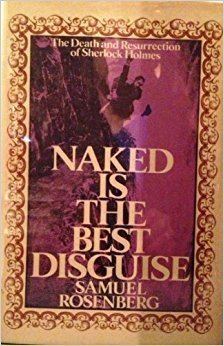6.4 /10 1 Votes6.4
Originally published 1974 | 3.2/5 Goodreads | |||||||||||||||||||||||||||||||||
 | ||||||||||||||||||||||||||||||||||
Similar How Watson Learned t, The Lost Special, Sherlock Holmes Was Wrong, The New Annotated Sherlock, The Valley of Fear | ||||||||||||||||||||||||||||||||||
Naked is the best disguise top 5 facts
Naked is the Best Disguise: The Death and Resurrection of Sherlock Holmes (ISBN 0-14-004030-7) is a book by Samuel Rosenberg speculating on the alleged hidden meanings in the works of Arthur Conan Doyle.
Rosenberg also examines the influence of Conan Doyle's writings on other works, especially James Joyce's Ulysses. Published in 1974, this book argues for a surprising relationship between the Sherlock Holmes stories and Nietzsche, Oscar Wilde, Dionysus, Christ, Catullus, John Bunyan, Robert Browning, Boccaccio, Napoleon, Racine, Frankenstein, Flaubert, George Sand, Socrates, Poe, General Charles George Gordon, Melville, Joyce's Ulysses, T. S. Eliot, and many others.
The title comes from lines in William Congreve's The Double Dealer (1694).
It alludes to Rosenberg's premise that Conan Doyle left clues throughout his works, revealing his innermost hidden thoughts.
Rosenberg's book was received with disdain by Sherlock Holmes enthusiasts and scholars in the 1970s. It is recognized as the first book of literary criticism about Doyle to appear in print; many other more respected works have followed.
